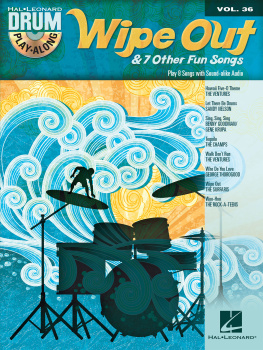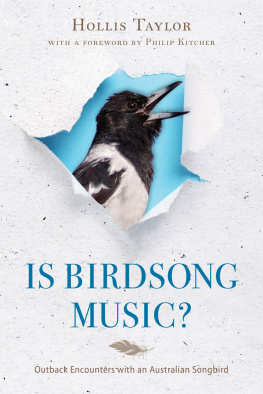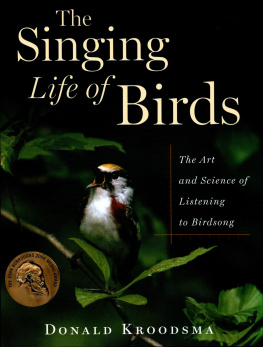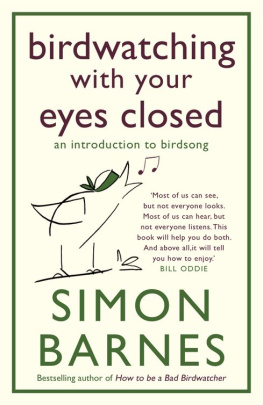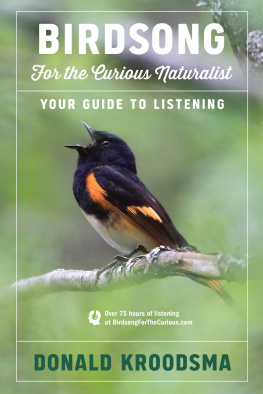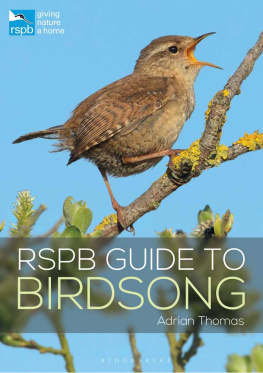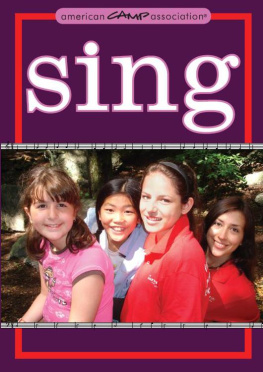ACKNOWLEDGMENTS
Don Kroodsma shared his lifes work with me over the course of nearly ten years. I am deeply grateful to him for his generosity, good companionship in travel, and the many hours he spent patiently explaining avian bioacoustics to me. Greg Budneys passion for birdsong and recording set this book in motion. My great thanks to him for talking with me at the Macaulay Library of Natural Sounds and for our time together in the field. And many thanks also to Debra Hamilton for her warm hospitality in Costa Rica and her expertise on the three-wattled bellbird. Much of what is known about the three-wattled bellbird comes from the important work she and others have done.
My days in the field in Costa Rica would not have been so rewarding and pleasurable were it not for the good company of Julio Sanchez, Danilo Brenes, and Dave Stemple. Others in Costa Rica were very helpful, including George Powell, Marcony Suarez, and Terri Mallory. Thanks as well to Melissa Kroodsma for her good company and for providing me with photographs that helped jog my memory. The trip to Nicaragua would not have been possible without the aid of Victor Janovich, Chepe Zolotoff, and Alejandra Martinez.
The co-leaders of the 2001 LNS Sound Recording WorkshopDavid Herr, Randy Little, and Kathy Dunsmoreplayed a far larger role at the workshop than my account suggests. Their wide-ranging knowledge of birdsong, recording, and analysis of sounds appears uncredited in several places. I have many good memories from a week of sunrises with the 2001 workshop participants: Eduardo Bejerano, Adele Binning, Michael Brezin, Susannah Buhrman, Frank Dorritie, Laura Erickson, Ashley Hayes, Santiago Imberti, Gadi Katzir, Christin Khan, Richard Peet, Nick Plavac, Carmen Salsbury, Tamara Smyth, Richard Tkachuck, and Paul Voigt. My gratitude tude also to Greg Clark; Geoff Keller; Jim Steele; and, from National Public Radio, Carolyn Jensen (who graciously provided me with transcripts from NPRs recordings at the workshop), Alex Chadwick, Sean Fox, and Bill McQuay. And I have not forgotten the helpful talk on physics and sound waves I had one afternoon with Bob Grotke. My appreciation as well to John Fitzpatrick, director of the Cornell Laboratory of Ornithology, and Jack Bradbury, director of the Macaulay Library of Natural Sounds, for their important work.
Special thanks to Peter Marler, Robert Dooling, and Alan Feduccia for taking time to talk with me about their work.
I worked with several editors on articles related to Birdsong that fed this book. My thanks to Roger Cohn, Pat Crow, David Seideman, Michael Robbins, and Jennifer Bogo at Audubon , and Tim Gallagher at Living Bird . At Scribner, Beth Warehams insightful editing was invaluable, and thanks to Nan Graham for her belief in this project, and also to Rica Allannic and Susan Moldow. John Taylor Williamss enthusiasm for this book and expert guidance have been a source of great comfort, as has the warm voice and attention to detail of Hope Denekamp.
I am particularly grateful to Stuart Dybek for countless bits of advice and for reading the manuscript at various stages. His comments on a late draft were especially helpful. And many thanks to Tracy Kidder for his careful reading of the manuscript and his suggestions.
Finally, I am deeply grateful to Terry Thaxton for her support and help with the manuscript from beginning to end.
A special note: Thanks to Don Kroodsma and Houghton-Miffl in for permission to include excerpts from Kroodsmas forthcoming book The Singing Life of Birds .
Throughout the manuscript I have often referred to the Macaulay Library of Natural Sounds simply as LNS, which is how I came to know the institution originally. Information on LNS is available at its website: http://www.birds.cornell.edu/macaulaylibrary/.
S everal years ago on a Sunday afternoon I wandered through the one-story cinder-block building at one of the most famous addresses in bird studies159 Sapsucker Woods Road: Cornell Universitys Laboratory of Ornithology. I had been let in, the door locked behind me, and I had the place to myself. To research an article I was writing on birdsong, I planned to review some of the literature in the labs private library, including materials that were available nowhere else, but within minutes I found myself drawn to another kind of archive. Passing through an unlit hallway hung with the paintings of Louis Agassiz Fuertes, the greatest of bird artists, and an early associate of the lab, I made my way to the southeast wing of the building and opened the gray metal door to Room 125. Stepping inside, I felt a rush of cool, dry air. The windowless room, tightly packed with rows of metal shelves, was austere: white walls, a cement floor, exposed ductwork and girders, and bare lightbulbs hanging from the ceiling. It had the sterile functionality of a hospital room, and it appeared, if anything, cleaner and more orderly. The only sound was air moving through the vents. It would have been difficult to imagine a more lifeless space, yet all around me, stored on wall-to-wall shelves, was the aural life of the planet. This was the archive of the Macaulay Library of Natural Sounds, the largest collection of its kind in the world. The shelves, which rose above my head, contained more than 130,000 individual recordings, some in neatly labeled boxes containing seven-inch reels of tape, others on standard cassettes in makeshift containers with hand-scribbled labels.
Walking down the narrow aisles, I found boxes that held the sounds of crickets chirping, mountain gorillas thumping their chests, triggerfish squirting water, and prairie dogs barking. It was birdsong, though, that had drawn me there, and birdsong that dominated the Library of Natural Sounds. There, arranged taxonomically from ostrich to raven, were the songs of nearly six thousand of the worlds nine thousand or so species of birds. On one shelf were the babbling-brook arias of mockingbirds, on another the flutelike ee-oo-lays of wood thrushes, and on others the wistful melodies of white-throated sparrows, the caroling of robins, and the songs of birds I had never seen nor heard: the superb lyrebird, laughing kookaburra, blackand gold cotinga, snowy-headed robin chat, and more. If I looked, I could find the sounds of my childhood, the ok-ka-leee of a red-winged blackbird and the squeaky-gate call of a blue jay. And somewhere, surely, was Keatss nightingale and Shelleys skylark. The room was brimming with sound. But of course I heard nothing. The silence was profound.
This archive of sounds is invaluable. A second set of recordings made from these originals is kept in a vault in a limestone cave for safekeeping. Several recordings hold the voices of birds now extinct. Many are the only known aural records of rare and elusive species. Recordings like these are critical in one of the newest fields in zoology: bioacoustics, the study of how animals use sound to communicate. In recent years, scientists have discovered that elephants use infrasonic sounds to send messages across great distances; that hippos are able to communicate simultaneously in water and air; that small insects known as treehoppers send vibrations through the stems of plants to communicate with other treehoppers; that vervet monkeys use one kind of alarm call to signal that a leopard is nearby and a different one to signal the presence of a snake. But it is birds that have attracted the most attention. It has always been birdsong that has most enthralled and mystified us. Frogs croak, crickets chirp, wolves howl, and lions roar, but birds sing .
Today, many ornithologists are listening to bird vocalizations and studying their intricacies in ways that were beyond the grasp of their predecessors only a generation ago. Avian bioacoustics has flourished in just the last few decades, a result of two inventions from the midtwentieth century: the tape recorder and the audiospectrograph, or sonograph. The latter, which produces a visual representation of sound, allows ornithologists to measure the details of a birds song as concretely as Darwin measured the beak of a finch. These tools make it possible to look for answers to some ancient questions: Why do birds sing? What do their songs mean?

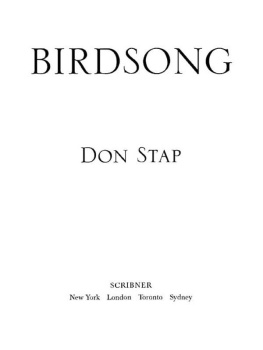
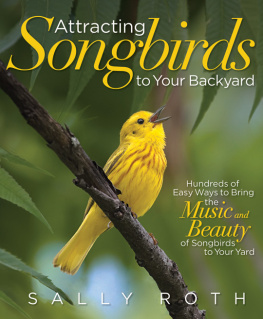
![Robert Choi - Korean Folk Songs: Stars in the Sky and Dreams in Our Hearts [14 Sing Along Songs with the Downloadable Audio included]](/uploads/posts/book/423508/thumbs/robert-choi-korean-folk-songs-stars-in-the-sky.jpg)
